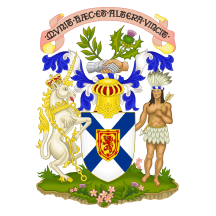WINNIPEG — Images from space and artificial intelligence can help detect areas prone to extreme wildfires, researchers suggest, after satellite photos showed dry parts of Manitoba ahead of its devastating wildfire season.
Scientists from the University of Ottawa and Université Laval in Quebec used data collected by NASA, the European Space Agency and the Canadian Drought Monitor to review areas hit by fast-moving blazes in late spring.
They found various climate anomalies, including a lack of winter snowfall and spring rain, contributed to “cumulative vegetation stress,” or drier soil and vegetation.
“Canada is often seen as a land of endless water with countless lakes, rivers and wetlands, but … right now we face the situation of the drought. Drought is more than just no rain,” said pr

 Lethbridge Herald
Lethbridge Herald
 Local News in Nova Scotia
Local News in Nova Scotia National Post
National Post CTV News
CTV News  AlterNet
AlterNet NBC10 Philadelphia Entertainment
NBC10 Philadelphia Entertainment CNN
CNN Cover Media
Cover Media America News
America News New York Post
New York Post